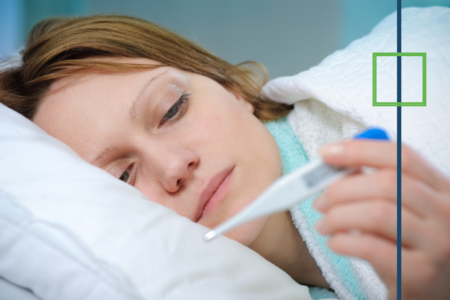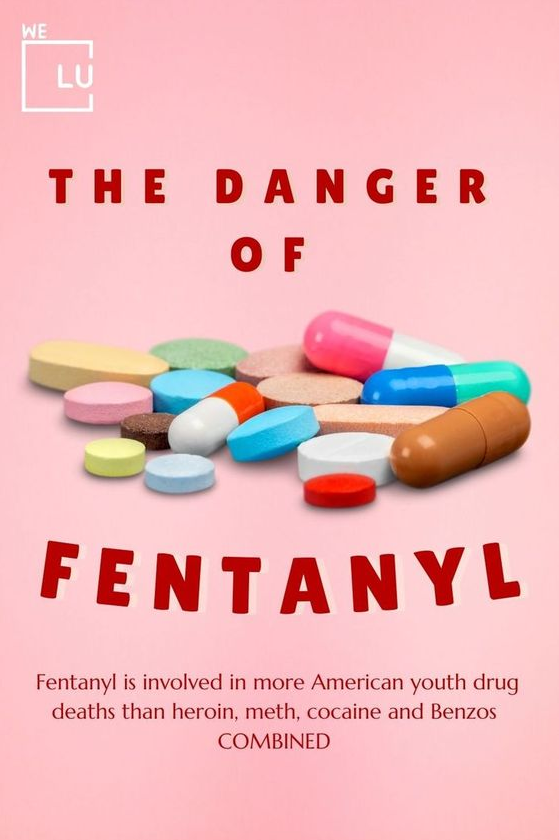Opioid Withdrawal
Opioid withdrawal syndrome is a life-threatening condition resulting from opioid dependence. Opioids are a group of drugs used to manage severe pain and include morphine, heroin, oxycontin, codeine, methadone, and hydromorphone. Opioids are sometimes abused, as they can assist with mental relaxation and pain relief and can produce a sense of euphoria. Chronic opioid use can lead to the development of potentially incapacitating dependence. If you stop or cut back on these drugs after heavy use for a few weeks or more, you will have a number of opioid withdrawal symptoms.
According to DSM-5, the following disorders must be ruled out first when treating a patient with opioid withdrawal.
Opioid-Induced Mental Disorders
Commonly co-occurring in opioid drug users and can be characterized by symptoms that occur in primary mental disorders. Such symptoms include depressed mood, persistent depressive disorder (dysthymia), and opioid-induced depressive disorder. Opioid withdrawal differs from other opioid-induced disorders because symptoms in other disorders predominate clinical presentation and warrant further diagnostic investigation.
Other Substance Intoxication
Alcohol intoxication, hypnotic, or anxiolytic intoxication can cause a similar clinical presentation of opioid intoxication and must also be ruled out.
Other Withdrawal Disorders
Sedative-hypnotic opioid withdrawal symptoms may resemble opioid withdrawal characteristics, but opioid withdrawal is also characterized by lacrimation, rhinorrhea, and pupillary dilation. Hallucinogen and stimulant intoxication can also cause pupillary dilation, but other symptoms of opioid withdrawal-like nausea, diarrhea, vomiting, lacrimation, and rhinorrhea are usually not present. [1]

How Long Does Opioid Withdrawal Symptoms Last?
| Opioid Withdrawal Symptoms Timeline | |
|---|---|
| Opioid withdrawal symptoms begin (short-acting opioids) | 6–12 hours after the last dose |
| Opioid withdrawal symptoms begin (long-acting opioids) | 30 hours after the last dose |
| Opioid withdrawal symptoms peak | 72 hours after the last dose |
| Opioid Withdrawal symptoms dissipate | Up to 10 days after the last dose |
What Causes Opioid Withdrawal?
In 2018 in the United States, about 808,000 people reported using heroin during the past year. In the same year, about 11.4 million people used narcotic pain relievers without a prescription. [2] Narcotic pain relievers include:
- Codeine
- Heroin
- Hydrocodone (Vicodin)
- Hydromorphone (Dilaudid)
- Methadone
- Meperidine (Demerol)
- Morphine
- Oxycodone (Percocet or Oxycontin)
These drugs can cause physical dependence. This means that a person relies on the drug to prevent withdrawal symptoms. Over time, more of the drug is needed for the same effect. This is called drug tolerance.
How long it takes to become physically dependent varies with each person. When the person stops taking the drugs, the body needs time to recover. This causes withdrawal symptoms. Withdrawal from opiates can occur any time long-term use is stopped or cut back.
What Are The Symptoms Of Opioid Withdrawal?
Early symptoms of withdrawal include:
- Agitation
- Anxiety
- Muscle aches
- Increased tearing
- Insomnia
- Runny nose
- Sweating
- Yawning
Late symptoms of withdrawal include:
- Abdominal cramping
- Diarrhea
- Dilated pupils
- Goosebumps
- Nausea
- Vomiting
These symptoms are very uncomfortable but are not life-threatening. Symptoms usually start within 12 hours of last heroin usage and within 30 hours of last methadone exposure.

Acute Opioid Withdrawal Symptoms
Consult with a healthcare professional trained in addiction in cases of acute opioid withdrawal management and detoxification program admission.
Opioid Withdrawal Symptoms Fever
Doctors take withdrawal fever very seriously, and in detox, all fevers are thoroughly investigated to make sure that they are not the result of an underlying infection, which should be treated immediately. Drug users may be more vulnerable to infections for a variety of reasons, and both drug effects and withdrawal symptoms may mask the need for urgent treatment for another condition.
Seek medical assistance immediately if:
- Your temperature goes above 103 F (40 C), and doesn’t come down within an hour of home treatment.
- Your fever persists for more than 24 hours.
- You have a serious medical illness, such as a heart problem, sickle cell anemia, diabetes, HIV, or cystic fibrosis.
- You have any confusion or a seizure with the fever. [3]
Opioid Withdrawal Symptoms Hypothermia
The definition of hypothermia is an involuntary drop in body temperature below 35C. Accidental hypothermia is not limited to regions or times of severe cold and can occur in milder climates. Symptoms will vary depending on the severity of hypothermia. Severity is defined based on core temperature as mild (32 to 35 C), moderate (28 to 32 C), and severe (under 28 C), with some experts also categorizing certain individuals with profound (less than 24 C) hypothermia. More severe symptoms, morbidity, and mortality are associated with worsening degrees of hypothermia. [4]
Hypothermia is potentially lethal if not quickly recognized and treated. The majority of patients first present to the emergency department, and the triage nurse should promptly accept the patient and inform the emergency department physicians. In general, treating patients with hypothermia requires an interprofessional team of healthcare professionals.
Opioid Withdrawal Complications
Complications include vomiting and breathing in stomach contents into the lungs. This is called aspiration, and it can cause lung infection. Vomiting and diarrhea can cause dehydration and body chemical and mineral (electrolyte) disturbances. The biggest complication is returning to drug use. Most opiate overdose deaths occur in people who have just detoxed. Withdrawal reduces the person’s tolerance to the drug, so those who have just gone through withdrawal can overdose on a much smaller dose than they used to take.
Opioid Withdrawal Treatment
Withdrawal from these drugs on your own can be very hard and may be dangerous. Treatment most often involves medicines, counseling, and support. You and your provider will discuss your care and treatment goals.
Withdrawal can take place in a number of settings:
- At-home, using medicines and a strong support system. (This method is difficult, and withdrawal should be done very slowly.)
- Using facilities set up to help people with detoxification (detox).
- In a regular hospital, if symptoms are severe.
MEDICINES
Methadone relieves withdrawal symptoms and helps with detox. It is also used as a long-term maintenance medicine for opioid dependence. After a period of maintenance, the dose may be decreased slowly over a long time. This helps reduce the intensity of withdrawal symptoms. Some people stay on methadone for years.
Buprenorphine (Subutex) treats withdrawal from opiates, and it can shorten the length of detox. It may also be used for long-term maintenance, like methadone. Buprenorphine may be combined with Naloxone (Bunavail, Suboxone, Zubsolv), which helps prevent dependence and misuse.
Clonidine is used to help reduce anxiety, agitation, muscle aches, sweating, runny nose, and cramping. It does not help reduce cravings.
Other medicines can:
- Treat vomiting and diarrhea
- Help with sleep
Naltrexone can help prevent relapse. It is available in pill form or as an injection. It also, however, can bring about a sudden and severe withdrawal if taken while opioids are still in your system.
People who go through withdrawal over and over should be treated with long-term methadone or buprenorphine maintenance.
Most people need long-term treatment after detox. This can include:
- Self-help groups, like Narcotics Anonymous or SMART Recovery
- Outpatient counseling
- Intensive outpatient treatment (day hospitalization)
- Inpatient treatment
Anyone going through detox for opiates should be checked for depression and other mental illnesses. Treating these disorders can reduce the risk of relapse. Antidepressant medicines should be given as needed.
Inpatient Drug Rehab Texas
Treating opioid withdrawal requires interprofessional teamwork by psychiatrists, nurses, social workers, therapists, pharmacists, and other healthcare professionals. The patient is initially stabilized in the emergency department setting before being transferred to inpatient detox. In an inpatient detoxification unit, nurses, therapists, and psychiatrists work together to manage symptoms before a patient is discharged to an outpatient program and follow up with a psychiatrist.
Thus, comprehensive care by multiple healthcare professionals is required to treat and manage an opioid withdrawal patient. The keys to working efficiently in a team are having proper communication and respect for the opinion of other healthcare providers. Most importantly, the patient should be actively involved in treatment decisions, and their needs must also be addressed.
How We Can Help? Searched for “dual diagnosis treatment centers Texas” or are you seeking a national inpatient rehab destination?

How We Can Help? Searched for “drug and alcohol treatment centers in Houston TX or Texas inpatient consultants?” or are you seeking a national inpatient rehab destination?
We Level Up TX opioid addiction treatment center is here to help individuals successfully complete the opioid detox process and to address psychological, physical, and spiritual issues connected to drug abuse. Qualified doctors, nurses, therapists, and addiction cases managers will be with you throughout the recovery process to ensure you have the support you need.
If you or a loved one is dealing with dependence or opioid withdrawal symptoms, contact our treatment support at We Level Up TX to find the best treatment option and opioid detox for you.
Sources:
[1] Opioid Withdrawal – National Center for Biotechnology Information
[2] Opiate and opioid withdrawal – U.S. Department of Health and Human Services National Institutes of Health
[3] Tips for Fever Management During Withdrawal – https://www.verywellmind.com/tips-for-withdrawal-fever-management-22373
[4] Hypothermia – National Center for Biotechnology Information





